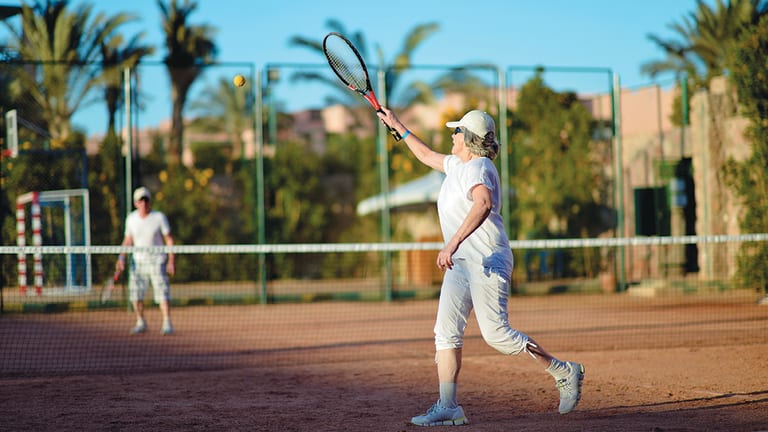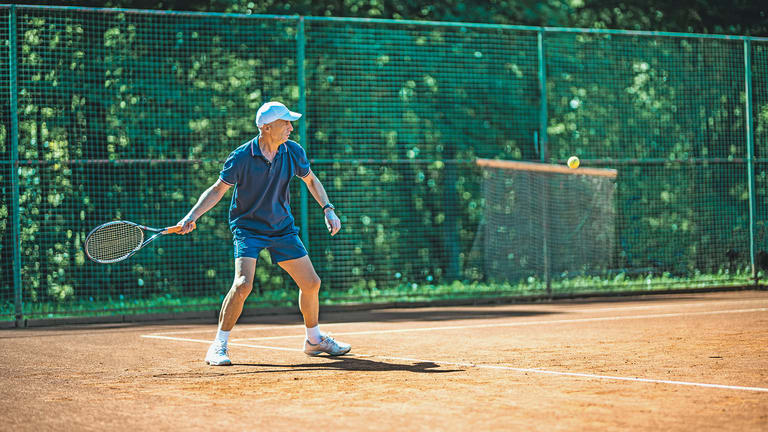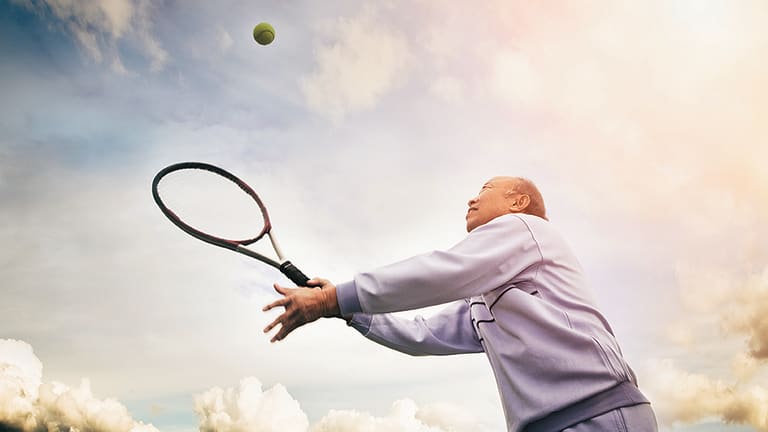What Could Go Wrong?
You’re following all the new rules and still getting beat. Maybe he’s just better or fitter, or played at Stanford way back when.
You’re three feet (yes) inside the baseline, controlling play, and then, all of a sudden, your opponent starts to…moon ball. All the low, paced shots you’ve been facing change. Try to hit this ball on the rise—almost half-hop it. It’s not always easy. Some of the time you have to retreat near or behind the baseline—back up. Let the ball drop, maybe hit a moon ball yourself. But be sure to eventually return to in front of the baseline.
And, hey, maybe you can adopt the heavy, heavy topspin play too.
You can always do what another top 70s player, Laury Hammel of Cambridge, Mass., pulled off.
“I was losing to an excellent guy, and couldn’t hold serve,” says Hammel. “So, at 15–40 I hit a backhand, underhand, sidespin serve, wide—ace. At 30–40 I go forehand, underhand, side spin, wide—another ace. Finally, at deuce, I go forehand, underhand, side spin, tee.”
You can guess what happened next.
Sixty-five-and-over tennis is for shot makers. You must have way more of a purpose with each ball or pattern than when you were a kid.
The pressure mounts, especially on the passing shots. Recall, these guys can volley. But knowing you need to go for it—mentally and physically—frees you. Your concentration will improve.
Be sure to get in good shape. Remember you’re running—exploding—forward now. Dart some sprints. And knock off playing too many “youngsters.” Since they truly hit the ball hard, setting up three feet inside baseline is tough, if not impossible. To win against these fellows you probably need to recoil your senior court position.
But remember to throw that thinking out when you play old-timers. Don’t revert to conventional court locations. Leave that for all those western-grip, poly-wielding, fifty-somethings.


